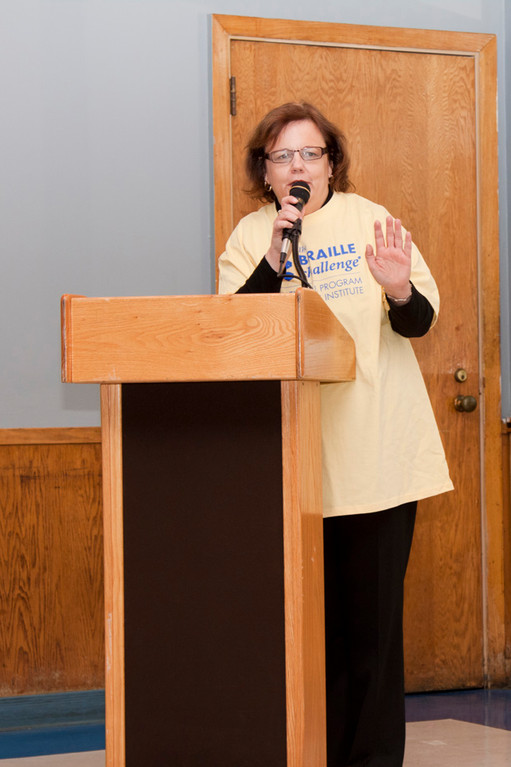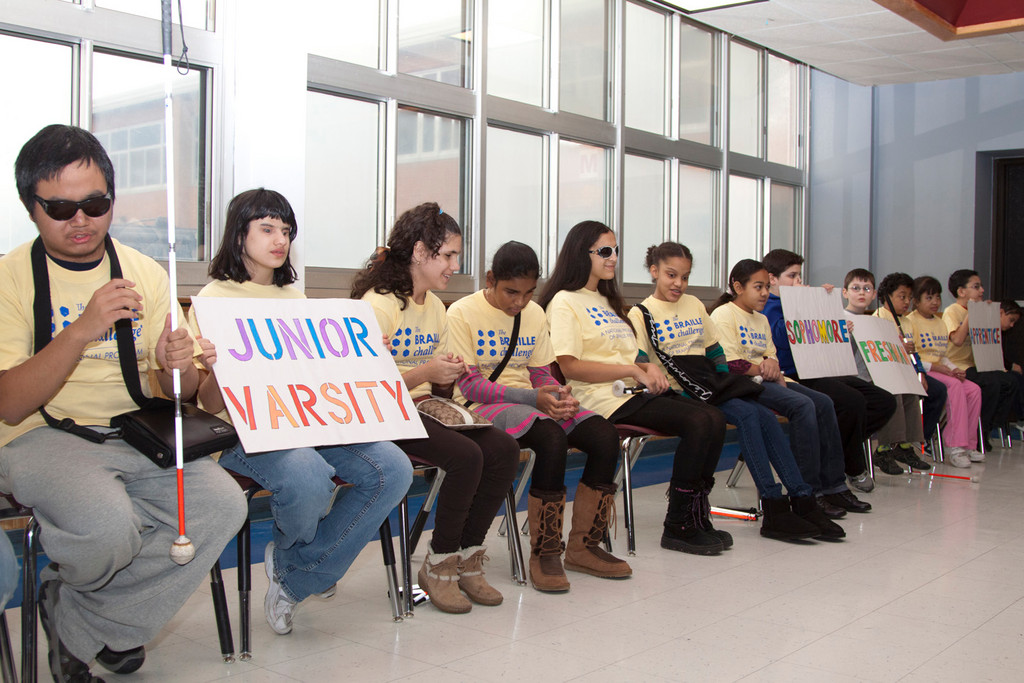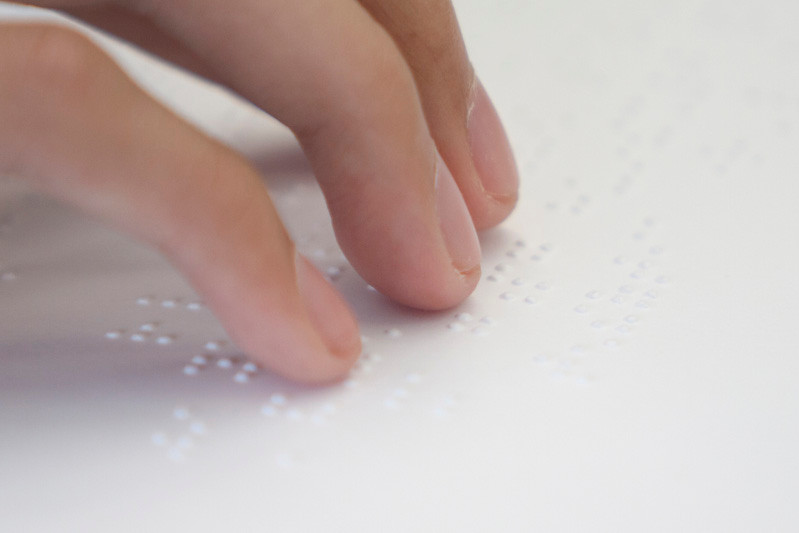Clarke hosts the Braille Challenge
Students compete in regional competition for chance to make national finals
Wiggling their fingers, 23 Long Island students in bright yellow T-shirts marched through the halls of W.T. Clarke High School to greet what lay before them — a fun-filled day of intense competition doing what they do best. Audience members cheered as contestants armed with enthusiasm and a hunger for learning competed in the regional Braille Challenge on Saturday.
The annual event allows blind and visually impaired students to practice their literacy skills while interacting with peers, an opportunity that does not happen often. Before Clarke began hosting the Challenge in 2007, teachers administered tests individually, without the support or camaraderie of fellow students.
“We have a longstanding tradition here in East Meadow of providing programs for children who have all kinds of diverse needs,” said East Meadow School District Superintendent Louis DeAngelo. “We are thrilled to be hosting the Braille Challenge for the fourth year in a row.”
Students from ages six to 18 competed in several categories ranging from speed and accuracy to spelling and reading comprehension. Participants with the top 12 scores nationally in each of the five age groups will advance to the National Braille Challenge in Los Angeles, explained Barbara Taffet, a Braille transcriber and head scorer of the regional competition.
Representing the East Meadow School District were Alex Calderon, 16, a student at Clarke High School, National Braille Challenge 2007 finalist Michael Taylor, a sixth-grader at Clarke Middle School and Parkway Elementary School fourth-grader Daniel Castro.
As students tested in a nearby classroom, tenaciously running their fingers over raised dots, parents participated in their own day of learning and festivities. Five panelists discussed knowledge and skills for independence in college. It is a rarely discussed topic, as nearly 50 percent of blind students drop out of high school, according to the National Federation for the Blind.

 50.0°,
Overcast
50.0°,
Overcast 















